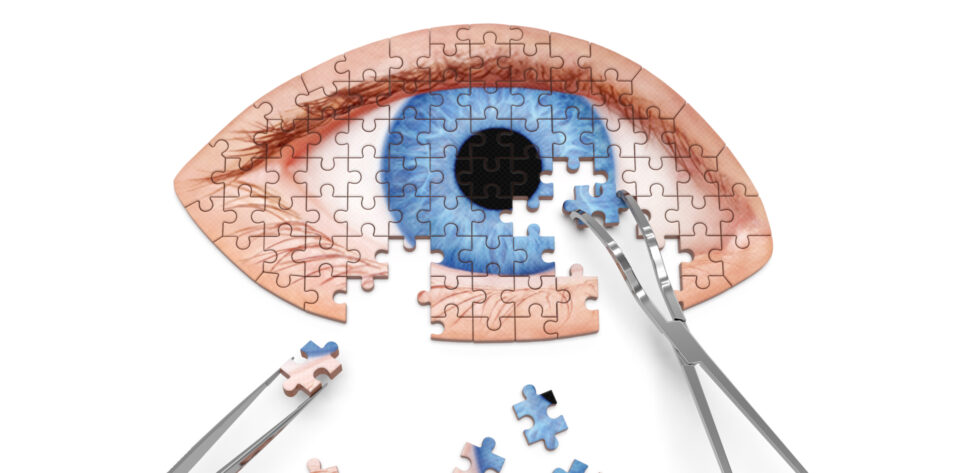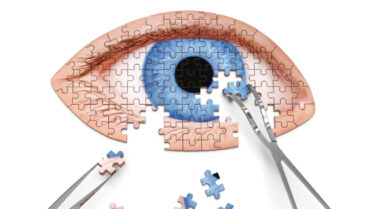
Ophthalmologists’ Attitudes Toward Immediate Sequential Bilateral Cataract Surgery: Dutch National Survey
Spekreijse LS, Veldhuizen CA, Henry YP, van den Biggelaar FJHM, Dirksen CD, Nuijts RMMA1
Industry support: None
ABSTRACT SUMMARY
A cross-sectional study assessed Dutch ophthalmologists’ attitudes toward performing immediately sequential bilateral cataract surgery (ISBCS). At the beginning of the COVID-19 pandemic, an electronic survey was sent to members of the Dutch Ophthalmic Society as part of an annual survey on cataract practice patterns.
Study in Brief
The COVID-19 pandemic dramatically affected health care delivery and introduced problems, such as having to wait to clean and aerate ORs between cases and having to nearly double the number of physician visits for delayed versus immediate sequential bilateral cataract surgery (ISBCS). A cross-sectional study demonstrated greatly increased interest in ISBCS among Dutch ophthalmologists who were not prominent ISBCS proponents previously.
WHY IT MATTERS
The shift in Dutch ophthalmologists’ attitudes toward ISBCS suggests a similar shift in European ophthalmologists’ attitudes overall.
Of the 520 survey recipients, 237 (45.6%) responded. Only 27.3% of respondents were currently performing ISBCS. Of them, 90.3% said they performed it only occasionally. One hundred and eight respondents (47.6%), however, were considering performing ISBCS routinely in the future. Of them, 92.6% planned to use intracameral antibiotics routinely, and 7.4% indicated that they would use them only for patients at increased risk of infection.
DISCUSSION
Dutch ophthalmologists perform about 180,000 cataract procedures annually, usually as delayed sequential bilateral cataract surgery (DSBCS) with at least 2 weeks between procedures. In the introduction to their published study, Spekreijse and colleagues stated, “Because of multiple advantages (faster visual rehabilitation, fewer hospital visits, no anisometropia, and a reduction of costs for patients, hospitals, and society) and the need to reevaluate the organization of cataract care during the COVID-19 pandemic, there is an increased interest to implement this procedure on a larger scale.”1
The study authors identified the reasons for Dutch ophthalmologists’ prior reluctance to perform ISBCS instead of DSBCS: “The fear of potential disadvantages of ISBCS (bilateral endophthalmitis, refractive surprise, or other complications) can impede implementation of the procedure. In addition, other potential implementation barriers may arise. One potential barrier includes the recommendation in national guidelines to perform ISBCS only in selected patient populations. Furthermore, there is a potential implementation barrier to logistics. Strict aseptic separation of surgical procedure, instruments, and other materials for first-eye surgery compared with that for second-eye surgery is required when performing ISBCS.”1
Dutch ophthalmologists have not been at the vanguard of ISBCS, so their views may be considered representative of the mainstream of Europeans. The respondents demonstrated a high level of interest in embracing ISBCS within the reality of the pandemic restrictions. Have their concerns—on par with those usually cited in discussions of ISBCS—been addressed?
No. 1: Bilateral simultaneous postoperative endophthalmitis. A detailed retrospective analysis and literature review conducted in 2022 evaluated the nine known published cases of bilateral simultaneous postoperative endophthalmitis (BSPOE) after ISBCS that have occurred during the past 50 years.2 BSPOE appears to be a rare occurrence. Five of the nine reported cases were associated with breaches of the International Society of Bilateral Cataract Surgeons (iSBCS) General Principles for Excellence in ISBCS 2009 and received no intracameral antibiotics.3 In one case, an indicator was not placed in the autoclave, so the instruments might not have been autoclaved adequately. Another case was due to Burkholdaria contamination of an illegally modified ventilation system. The remaining two cases were in immunosuppressed patients, and the dose of intracameral antibiotics administered might not have been adequate.2 If the iSBCS principles are followed, the risk of BSPOE is about the same as the risk of death while driving an automobile 1 km on a US road (approximately 1:100 million).
No. 2: Refractive surprise. Refractive accuracy is a demanding aspect of cataract surgery. In the literature, refractive accuracy is similar with ISBCS and DSBCS. It is important that surgeons use the latest biometric methods.4
No. 3: National guidelines. In recent years and particularly since the start of the COVID-19 pandemic, multiple countries have altered their national guidelines to become more ISBCS friendly.4
No. 4: Logistics. Following the iSBCS principles requires changes in logistics and the management of ORs (see specifically chapter 16.9, Canada, appendix4). That said, ophthalmologists have had to make changes during the pandemic anyway, and these should be updated continually.
One concern about ISBCS raised by Spekreijse remains significant: 7.4% of responding surgeons who were considering embracing ISBCS planned to use intracameral antibiotics only in patients at high risk of infection. This was a surprising position in 2022. How can all surgeons be convinced to use intracameral antibiotics in every cataract case—a step that has been overwhelmingly and repeatedly shown to reduce the risk of postoperative endophthalmitis by at least 80% (see specifically chapter 7, pgs 85–974)? Clearly, more work must be done. It is difficult to imagine what will convince all practitioners of the importance of intracameral antibiotics, but people around the world are working on it.
Visual Recovery After Immediate Sequential Bilateral Cataract Surgery at a Veterans’ Hospital
Kwedar K, Arnold J, Hesemann N5
Industry support: None
ABSTRACT SUMMARY
A retrospective chart review addressed a question frequently posed by patients: “Doctor, how soon will I regain functional vision if I undergo ISBCS?” The study included 116 patients who underwent ISBCS and were assessed at postoperative day 0 or 1, postoperative week 1, and postoperative month 1. By postoperative day 1 and week 1, 72% and 100% of patients (excluding bilateral age-related macular degeneration noted before surgery), respectively, had an uncorrected distance visual acuity of at least 20/40. The median uncorrected distance visual acuity 1 day after surgery was 20/30.
Study in Brief
A retrospective chart review assessed the uncorrected distance visual acuity of 116 patients who underwent immediately sequential bilateral cataract surgery to determine how quickly their functional vision returned. The median uncorrected distance visual acuity was 20/30 by postoperative day 1.
WHY IT MATTERS
Patients undergoing immediately sequential bilateral cataract surgery routinely ask how quickly they will recover functional vision. The study provides reassurance that most of them will regain driving vision or better within 1 day of surgery.
DISCUSSION
Kwedar and colleagues provide a lot of details about functional vision after ISBCS, but the bottom line is of most interest to ophthalmologists and their patients. In the Province of Ontario, Canada, where I practice, patients are not allowed to drive for 24 hours after undergoing any kind of operation. The study by Kwedar et al reassures me that what I have been telling my ISBCS patients is true: “You are not allowed to drive for 24 hours after surgery. After that, unless you have an unusual problem, you should be able to drive and return to normal activities.”
1. Spekreijse LS, Veldhuizen CA, Henry YP, van den Biggelaar FJHM, Dirksen CD, Nuijts RMMA. Ophthalmologists’ attitudes toward immediate sequential bilateral cataract surgery: Dutch national survey. J Cataract Refract Surg. 2022;48(9):1044-1049.
2. Chen MY, Qi SR, Arshinoff SA. Bilateral simultaneous postoperative endophthalmitis: review of cases reported over the past 50 years. J Cataract Refract Surg. 2022;48(7):850-854.
3. iSBCS General Principles for Excellence in ISBCS 2009. International Society of Bilateral Cataract Surgeons. Accessed December 14, 2022. https://itgo.ca/eyefoundationcanada/wp-content/uploads/sites/5/2020/05/2010-09-01-FINAL-ISBCS-SBCS-suggestions-from-ESCRS-Barcelona.pdf
4. Immediately Sequential Bilateral Cataract Surgery: Global History and Methodology. Arshinoff SA, Claoué C, Johansson B, eds. Academic Press; 2022:101-135. Editor’s note: chapters 9–11.
5. Kwedar K, Arnold J, Hesemann N. Visual recovery after immediate sequential bilateral cataract surgery at a veterans’ hospital. J Cataract Refract Surg. 2022;48(11):1260-1263.




